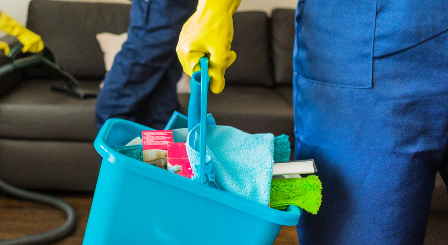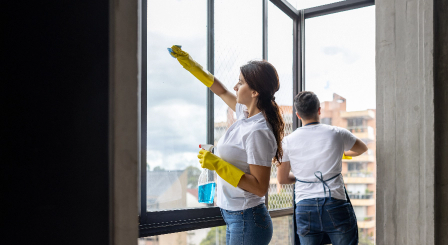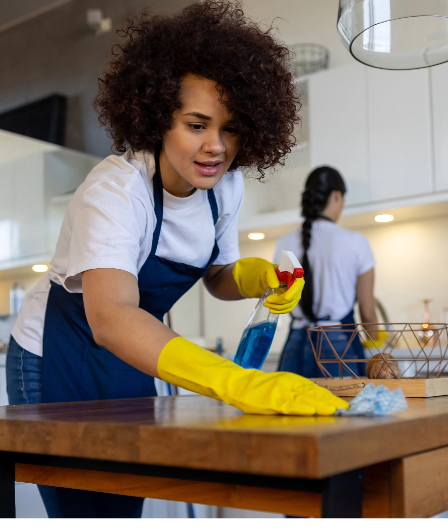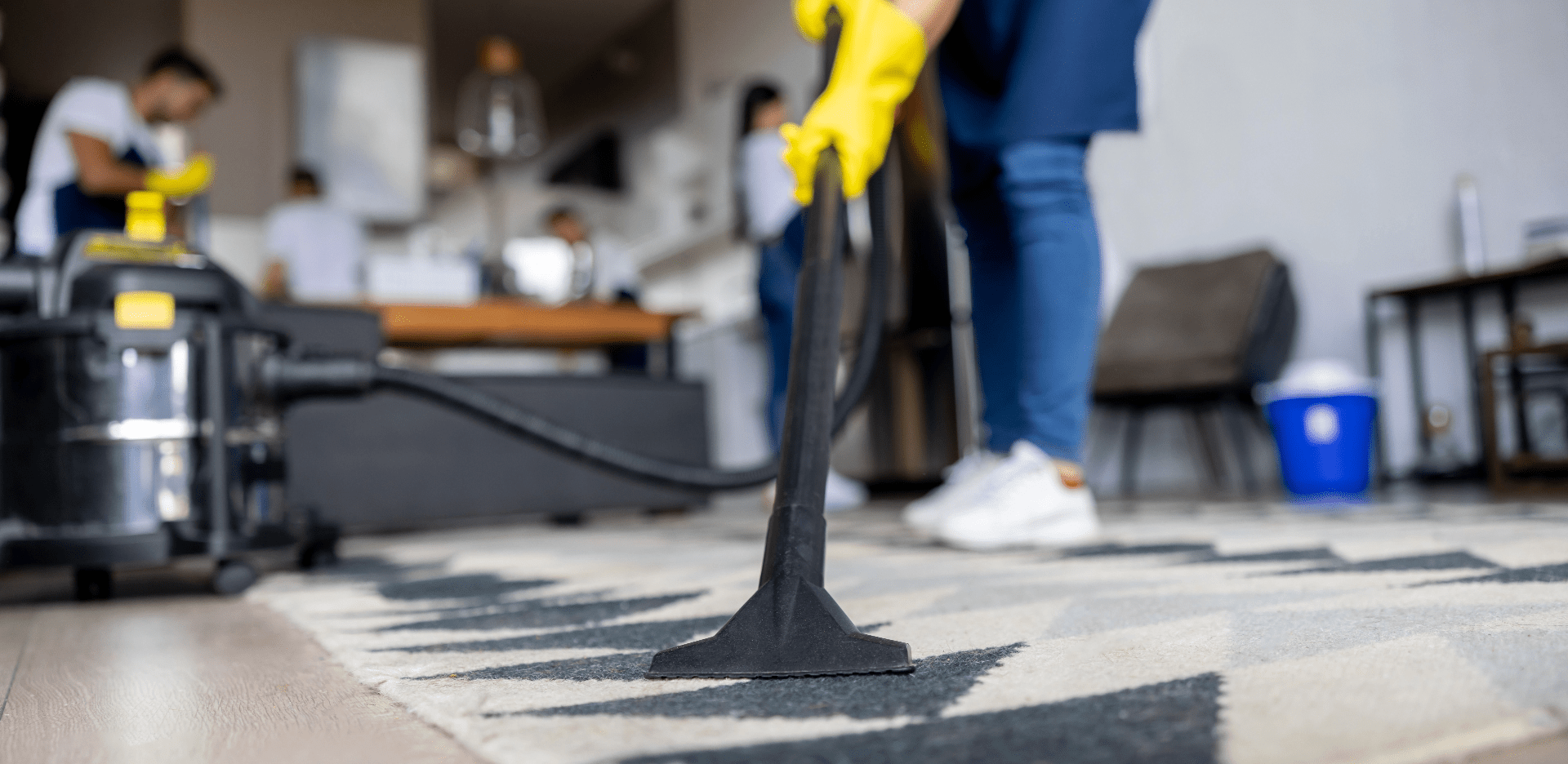Risks and Hazards for Cleaners
The British Cleaning Council (BCC) has reported that the UK Cleaning industry employs over 1.47 million workers, making up approximately five percent of the UK workforce.
While only 3,000 serious accidents involving cleaners are reported to the Health & Safety Executive (HSE) each year, under reporting means there may be many more accidents than this. Just 3,000 accidents out of over 1 million workers may make you feel like the odds are in your favour, but if most of the accidents are easily avoidable, why take the risk?
What is a risk assessment?
As a business owner, it’s up to you to spot and highlight the risks present within your workplace. The first step towards identifying and controlling the possible risks to your cleaning business is to perform a risk assessment.
It might sound pretty formal, but it doesn’t always need to be. A risk assessment simply involves working out any ways in which your business operations could potentially cause harm or injury to either yourself, an employee or a member of the public, then planning the steps you’ll take to mitigate those risks. It’s an important step in ensuring you’re complying with your responsibilities as an employer.
If your business has under five employees, you don’t need a formal written risk assessment, although it might still be a good exercise for training any staff or refreshing yourself on best practice when you take a new client.
However, if you employ five staff or more full time, then your risk assessment should be a written health and safety policy that you can use to train your staff and prevent accidents.
Hazards and risks
It may help to split your risk assessment into hazards and risks and to know the difference between the two:

Hazards
Hazards are objects or situations with the potential to cause harm. These could be items like tools, ladders or chemicals, or processes like lifting and moving stock or working at height.
Identify your hazards by examining each aspect of your business practices and asking yourself: what activities, processes, tools or substances could insure someone or harm their health? Check any accident records you might have, check manufacturer’s instructions or warning labels on any products you use and visit the Health and Safety Executive.

Risks
Risk, on the other hand, is an assessment of how likely things are to go wrong and how serious the implications might be if they do. If a hazard is high risk, it’s either very likely to happen or very severe when it does happen. If a hazard is low risk, then it may be unlikely that it ever happens.
Risk is a part of everyday life and it’s impossible to eliminate every risk present in your business. But as a responsible salon owner, it’s your responsibility to do everything ‘reasonably practical’ to control the risks your business presents.
Common hazards for cleaners
Slips and trips
According to HSE’s 2022 statistics, slips, trips and falls are the most common type of non-fatal accidents at work (30%). With freshly mopped floors and vacuum cables abound, the space you’re cleaning can quickly become hazardous for people to walk about.
Slips can easily be caused by a floor being cleaned and left wet, or a product or water spilling onto the floor and not being noticed quickly enough, while trips are most commonly caused by loose cords or cables from a hairdryer or vacuum for example.
Top tips for avoiding this risk:
- Make sure everyone knows which parts of the floor are still wet from cleaning. Stick a yellow ‘caution: wet surfaces’ sign over the area
- When cleaning, use the right amount of the right cleaning product
- Ensure spillages are dealt with promptly
- Use a dry mop or squeegee to reduce drying time on surfaces
- Keep walkways as clear as possible of trip hazards like cords and cables, and keep communication with employees and staff of any cables in use, for example from a vacuum cleaner
Hazardous substances/Using chemicals
Cleaning can be a dangerous occupation due to the many chemicals that can be used in the process. While you don’t need a degree in chemistry to become a cleaner, you should definitely have a clear understanding of the active ingredients in different cleaning products and how to use them safely.
Keep cleaning chemicals safe:
- Don’t re-use empty containers. If you want to decant chemicals from a large container into smaller ones that are easier to carry around, be careful not to unintentionally mix chemicals by using the same uncleaned container for two different products
- Correctly store your products so that they can be used safely. For example, a product getting too hot could cause it to evaporate and create toxic fumes
- Wipe down any already-cleaned surfaces with water before using a different chemical on them to ensure there’s no unintentional mixing
- Always wear gloves when cleaning to protect your skin from chemical burns
- Open windows for better ventilation when using cleaning chemicals
- Never mix bleach with any product other than water
- If you start to feel short of breath or have chest pains, immediately cease use of the chemicals, get fresh air and seek medical attention
Cuts and grazes / Broken glass and materials
Cuts and grazes as a result of broken glass or other sharp refuse can happen when cleaning up a mess. And in addition to cuts and grazes, there’s additional risk from possible blood transmission from one person to another and risk of blood-borne infection.
To keep staff safe:
- Keep a first-aid box stocked at all times
- Train staff in basic first aid or health and safety
Manual handling
Lifting, pushing and pulling is often part and parcel of any type of occupation, from bricklayers to beauticians and from hairdressers to haberdashers. And according to the HSE, 18% of the most common workplace accidents were caused by handling, lifting or carrying in 2020-21.
The most common injuries associated with manual handling are musculoskeletal disorders (MSDs), including pain or injury to arms, legs and joints. Back and shoulder strains are very common too, as well as repetitive strain injuries (RSI).
Manual handling injuries can occur almost anywhere in the workplace, but heavy manual labour, awkward postures, repetitive movements of arms, legs and back or previous/existing injury can increase the risk. However, many manual handling type injuries can be caused by smaller tasks like packing, typing, cleaning, or moving supplies.
For a full rundown of the best manual handling practices, follow AXA’s guide to manual handling here.
The best manual handling techniques are:
- Think before you lift
- Use a safe lifting position
- Get a good grip
- Don’t lift with your back
- Avoid twisting
- Look up
- Move smoothly
- Don’t lift more than necessary
- Put it down, then adjust
Lone working
Cleaners often work alone at odd hours of the day so that they don’t interfere with other people’s daily life. Whether that’s at someone’s home or in a commercial environment, you’re often behind the scenes. This can pose a risk because if an accident happens, there may not be anyone available to help.
Here’s a few ways to try and combat that risk:
- Give lone workers additional training on managing risk so that they can control their environment better.
- Have a monitoring system in place to ensure lone workers are checked in on regularly. Test these systems regularly to make sure they work.
- Ensure lone workers have first aid kits on hand and the correct training on how to use them effectively.
Skin irritation
One of the most common cleaning hazards is skin damage from wet hand work, including dermatitis. In fact, the leading causes for work-related skin disease in the UK are wet work and soap & cleaners.
The frequent contact with water and cleaning products can irritate the skin, leading to damage like rashes, blisters or dry, flaky skin.
In most cases, these types of hazards are preventable. Small things like using suitable disposable gloves and drying hands thoroughly can reduce the risk of skin damage.
Some quick tips to avoid this risk:
- Provide non-latex disposable gloves to staff, and change gloves between clients
- Provide hand cream to keep hands moisturised
- Staff training on proper hand washing and drying technique
- Check skin regularly for signs of damage
Damaged electrical equipment
If you’re frequently using equipment such as vacuums, buffers, and other electrics then the wear and tear on them can become a hazard. If a wire ends up frayed or exposed, you could be at risk of a electrical shock. While a shock may sound insignificant, sustained electrical shocks can have devastating consequences.
To check electrical equipment is safe HSE recommends switching it off and then:
- Check that the plug is not damaged and that the cable is properly secured with no internal wires visible.
- Check the electrical cable is not damaged and has not been repaired with insulating tape or an unsuitable connector. Damaged cable should be replaced with a new cable by a competent person.
- Check that the outer cover of the equipment is not damaged in a way that will give rise to electrical or mechanical hazards.
- Check for burn marks or staining that suggests the equipment is overheating.
- Position any trailing wires so that they are not a trip hazard and are less likely to get damaged.
Find more tips at: https://www.hse.gov.uk/electricity/electricequip.htm
How to protect your cleaning business
No matter how careful you are, you can’t eliminate every hazard and accidents can always happen. That’s why business insurance from AXA can help protect you if things do go wrong.
At AXA, we give you the freedom to style your insurance to meet your needs. You can pick and choose covers and build an insurance policy that protects your business, your employees if you have any, and any specialist equipment you have.
Main covers for cleaning businesses:

Which protects you, your staff and your customers from accidental injury that occurs as a result of your business practices.
Employers’ liability insurance:
Which is a legal requirement for any business with employees' and protects your business if your staff are injured or fall ill as a result of working for you.
If you use a van for work we can cover you and help keep you on the road, with accident recovery, roadside repairs and a guaranteed courtesy van when your van is under repair at an approved garage following an accident.
Protect the future of your business
Running a business is hard work, so you want to protect the work you put in to make your business a success. Do a little thing today that can make a big difference to your business tomorrow. Get AXA Business Insurance and Future You will thank you.
Protect Future You
All links are checked and valid at time of publishing, 18 January 2024.
